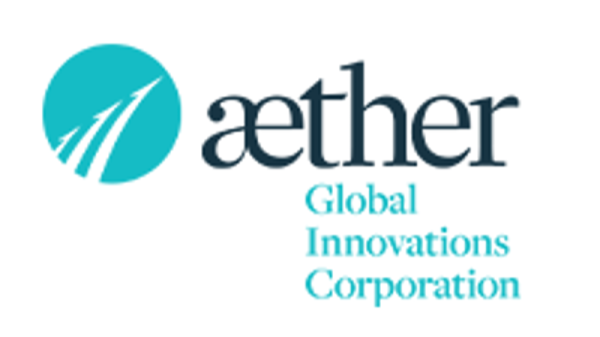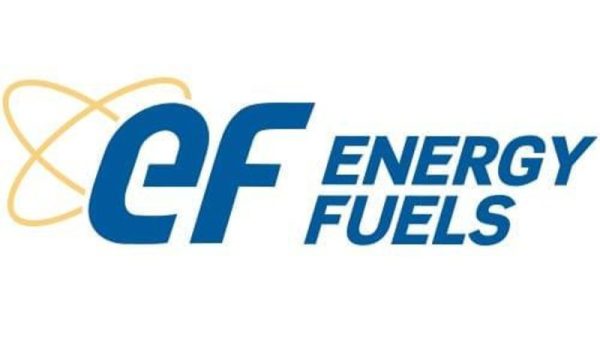The first quarter of 2024 brought a robust performance from the stock market, with the S&P 500 (INDEXSP:.INX) achieving a notable 10 percent gain — its largest Q1 advance since 2019.
Investor confidence during this period appeared to be buoyed by expectations that the US Federal Reserve will lower interest rates this year. However, reports on gross domestic product, job growth and consumer pricing indicate inflation may be persistent, contributing to Fed Chair Jerome Powell’s cautious approach to lowering interest rates.
On the cleantech side, BloombergNEF reported that clean energy investment surged 17 percent last year, and the industry’s performance in Q1 demonstrates its resilience and adaptability amid evolving economic conditions and a heightened focus on sustainability. Notably, a Ceres report from the end of March shows that a record number of climate-related shareholder resolutions had been filed in 2024 for the annual meetings of companies in North America.
“In Q1 of 2024 we saw more of the ‘new normal’ in venture and growth investing — following the explosive years of financing during the pandemic, equity financing levels have essentially leveled out, but have settled at average levels higher than the averages pre-pandemic,” said Anthony DeOrsey, research team lead at Cleantech Group.
At a global level, the discussions and agreements at COP28 late last year highlighted the importance of addressing climate change through a swift and just transition to renewable, sustainable energy sources. This urgency provided a backdrop for evaluating the performance of the cleantech industry in 2024’s first quarter.
What trends impacted cleantech in Q1?
US supports cleantech sector with funds and policies
Government investment is key for the cleantech industry to thrive and innovate, and in February, the US Department of Energy announced it would invest US$100 million to support pilot projects and testing facilities focused on carbon dioxide (CO2) removal technologies. This funding is part of the Carbon Negative Shot Initiative, which aims to reduce the cost of capturing and storing CO2 from the atmosphere to less than US$100 per net metric ton by 2032.
The Biden administration also demonstrated its commitment to addressing climate change by allocating US$6 billion to fund 33 projects focused on decarbonizing energy-intensive industries, such as aluminum and other metals mining, cement and concrete production and iron and steel operations. The project is part of the government’s Investing in American Agenda, with funding coming from the Infrastructure Law and the Inflation Reduction Act.
According to a March press release, these efforts are expected to reduce the equivalent of over 14 million metric tons of CO2 emissions annually, comparable to the emissions of 3 million gasoline-powered cars.
Also in March, the Environmental Protection Agency announced a new rule to limit tailpipe emissions on light-duty and medium-duty vehicles starting in 2027. This rule, which the Biden administration has called the “strongest ever” of its kind, is part of the Investing in America Agenda and is funded by the Infrastructure Law and Inflation Reduction Act.
Steel and cement industries getting greener
Cement and steel are two of the most-produced materials globally, and are among the world’s top sources of CO2 emissions. Now, however, efforts are being made to make these markets greener.
“These traditionally hard-to-abate sectors now have enough of a slate of innovative solutions to start charting a path forward to decarbonization,” DeOrsey said about these industries.
“We are now at an interesting stage in which there are new green steel and cement production technologies that are entering the market (mostly through demonstration plants, but some at commercial scale) — a first ‘tranche’ of technologies is emerging while the more nascent technologies are seeing more venture support.”
Cleantech Group’s take on the “tranches” of green steel and green cement development.
Chart via Cleantech Group.
For example, Brimstone received a US$189 million federal investment to build a new plant to deploy its decarbonized process for producing cement, and Sublime Systems was selected to receive US$87 million to accelerate the construction of a cement factory in Massachusetts. It will reduce carbon emissions by replacing limestone with calcium silicate, thereby producing industry-standard cement with electrochemical reactions instead of applying heat.
DeOrsey also mentioned Skyven Technologies, a California-based startup company that has received US$145 million to deploy steam-generating wind pumps to manufacturing facilities worldwide.
Overseas, H2 Green Steel and Boston Metal have recently made significant advancements in this area. Stockholm-based H2 Green Steel secured 6.5 billion euros to build the world’s first large-scale green steel plant in Europe, with contributions from institutional investors such as the Microsoft Climate Innovation Fund, Mubea and Siemens Financial Services, along with a 250 million euro grant from the EU Innovation Fund. Meanwhile, Boston Metal raised US$20 million in Series C2 funding from Marunouchi Innovation Partners, bringing the total to US$282 million, to expand its presence in Asia and further develop its platform for decarbonized steelmaking using molten oxide electrolysis.
EV market faces challenges and opportunities
The first quarter of 2024 saw notable developments in the electric vehicle (EV) industry unfold.
Tesla (NASDAQ:TSLA), facing backlash from investors after reporting Q1 sales figures that were 8.5 percent lower than the previous year, opened its North American Superchargers to Ford (NYSE:F) EVs. To improve profit margins, Tesla also chose to raise the price of its Model Y EVs by 2,000 euros in Europe and by US$1,000 in the US.
In China, EV sales growth has slowed in recent months. However, in March, Chinese EV manufacturer BYD (HKEX:1211) debuted an affordable EV model priced below US$10,000. It is currently not sold in the US, but reportedly has attracted attention from American carmakers. BYD has set an ambitious target to increase its annual sales by 20 percent, aiming to sell 3.6 million units in 2024. The company is aiming for half a million of those sales to be overseas.
Meanwhile, Waymo, a subsidiary of Alphabet (NASDAQ:GOOGL), made progress in the autonomous vehicle sector by securing approval to operate its self-driving cars at speeds of up to 65 miles per hour on highways and local streets in specific areas of Los Angeles and the Bay Area. For its part, newcomer Fisker (OTC Pink:FSRN), which launched its first EV in 2023, has encountered substantial difficulties, as demonstrated by the company’s decision to reduce the price of its Ocean SUV by 39 percent. The company was also forced to halt production, is facing a potential bankruptcy and was delisted from the New York Stock Exchange on April 22. These developments highlight the varied experiences and challenges faced by different players in the evolving EV and autonomous vehicle markets.
“An interesting pull-through effect of global EV rollout has been the opportunities it is creating for innovation and growth of new technologies in EV charging — Europe has seen consistent venture activity in this regard over the past few years,” said DeOrsey about trends he’s noted in this part of the cleantech sector.
What factors will move the cleantech market in 2024?
Enhanced geothermal gaining steam
As the year continues, where should cleantech investors direct their attention?
“A space to watch is enhanced geothermal,” said DeOrsey. “Despite having significant potential to provide 24/7 firm clean power, challenging project economics have remained a barrier. New technologies in drilling and closed-loop systems have shown promise to better access the latent power potential in hot, dry rock geothermal deposits.”
Recent developments in this space include a US$17 million Series A funding round led by Chesapeake Energy (NASDAQ:CHK) to develop EarthStore, Sage Geosystems’ first commercial geopressured geothermal systems facility, in Houston in Q4 of this year. Also, geothermal energy startup Fervo Energy raised US$244 million in February to further operations at a project in Utah that is aiming to bring 400 megawatts of clean electricity to the grid by 2026.
Quaise Energy, identified by DeOrsey as another geothermal energy company to watch, raised US$21 million in a Series A1 funding round, with new investors Mitsubishi (TSE:8058) and Standard Investments joining Prelude Ventures and Safar Partners. Quaise is developing terawatt-scale geothermal energy by vaporizing rock with MIT-researched techniques that use millimeter-wave microwaves to dig deep geothermal wells.
Other cleantech developments to watch
As the EV market evolves, Tesla is facing a potentially difficult year, with analysts anticipating decreased sales. However, the success of emerging competitors like Xiaomi (HKEX:1810), whose debut of the SU7 model resulted in a 16 percent surge in share value, demonstrates that the EV landscape remains dynamic.
“There is already a high 27.5 percent import tariff on Chinese-built vehicles in the US,” he continued. “The onus will now be on US manufacturers to slash costs through learning effects and use of technology.’
In DeOrsey’s view, western EV producers should look to leverage new technology in order to reduce expenses. While there are many variables at play, Cleantech Group sees innovation reducing cathode costs for batteries.
He is monitoring Ascend Elements’ US$162 million funding round, which will go toward the construction of North America’s first sustainable cathode precursor manufacturing facility, set to open in early 2025.
Aside from that, a recent partnership between Canada’s Heliene and Georgia-based Suniva marks an important development for US solar project developers, as it enables them to take advantage of a new federal subsidy offered under the Inflation Reduction Act. By joining forces, Heliene and Suniva will produce ‘Made in USA’ solar panels, incorporating Suniva’s US-made solar cells into Heliene’s US-made solar modules.
Finally, if GE Verona (NYSE:GEV), a spinoff of General Electric (NYSE:GE) that encompasses GE Renewable Energy, GE Power and GE Digital, continues to demonstrate a strong performance on the New York Stock Exchange, it could serve as an indicator of investor confidence in the renewable energy and power sectors.
Investor takeaway
As the world increasingly embraces cleantech, investors can strategically allocate their resources by staying informed on recent and emerging trends, policies and partnerships that are shaping the renewable energy landscape.
Securities Disclosure: I, Meagen Seatter, hold no direct investment interest in any company mentioned in this article.







































